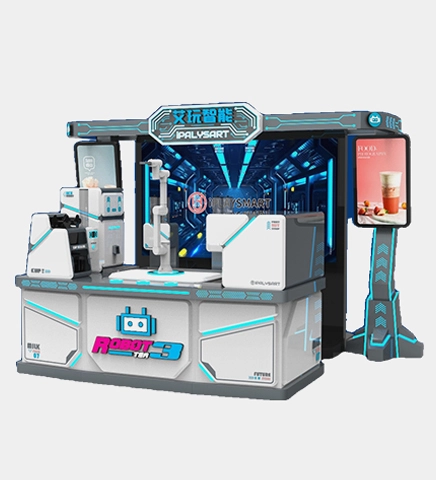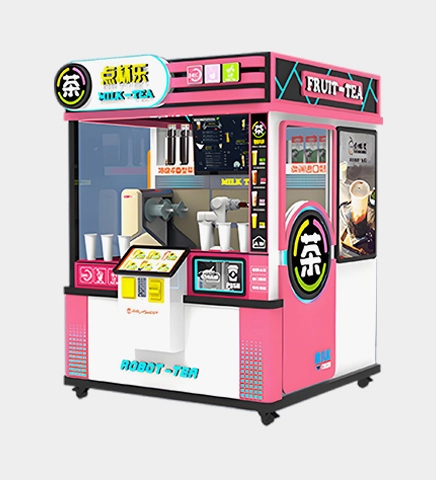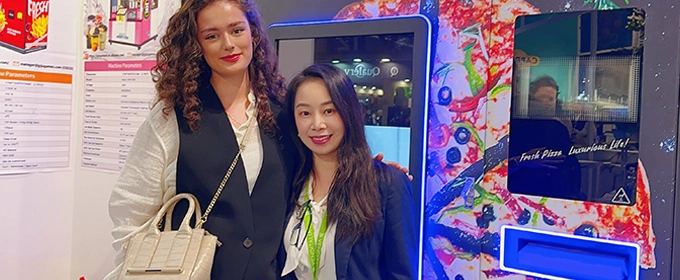Dreaming of a passive income stream from a milk tea vending machine? The allure of automated retail is strong, but hidden costs can eat into your profits.
The true cost of owning a milk tea vending machine includes purchase ($3,000–$10,000), installation ($500–$1,500), inventory ($200–$500/month), maintenance ($50–$100/month), and upgrades ($1,000–$3,000).
Owning a milk tea vending machine is a lucrative venture, but success hinges on understanding all expenses. From my experience, budgeting smartly ensures profitability. Keep reading to uncover the full cost breakdown.
Buying a vending machine sounds simple, but the price tag can surprise you. I learned this the hard way when starting out.
A new milk tea vending machine costs $3,000–$10,000, depending on features. Used machines range from $1,500–$5,000 but may need more repairs.

When I bought my first milk tea vending machine, I was shocked by the price range. Basic models start at $3,000, but advanced ones with touchscreens and cashless payment systems can hit $10,000. Used machines are cheaper, often $1,500–$5,000, but I found they break down more often. Specialty machines, like those dispensing customizable bubble tea, tend to be pricier due to their brewing and mixing technology. Choosing a reliable manufacturer is key—cheap machines from unverified sources often lead to costly fixes. I recommend budgeting for a new or refurbished machine with a warranty to avoid surprises.
| Machine Type | Cost Range | Pros | Cons |
|---|---|---|---|
| New Machine | $3,000–$10,000 | Reliable, modern features | Higher upfront cost |
| Used Machine | $1,500–$5,000 | Lower cost | Frequent repairs |
Setting up a vending machine isn’t just plug-and-play. My first installation taught me to plan for unexpected fees.
Installation costs for a milk tea vending machine range from $500–$1,500, covering transport, setup, and electrical adjustments.Understanding Setup Expenses
I once assumed installation was straightforward, but transporting a heavy machine (200–800 pounds) requires professionals, costing $200–$500. Electrical setup, especially for milk tea machines needing refrigeration or brewing systems, adds $300–$1,000. If the location lacks proper wiring, you’ll pay more. I learned to scout sites beforehand to avoid surprises. Some vendors offer free installation with purchase, but always confirm what’s included. For busy spots like malls, you might also pay a setup fee to the property owner, so factor that in.
| Installation Task | Cost Range | Considerations |
|---|---|---|
| Transport | $200–$500 | Distance, machine size |
| Electrical Setup | $300–$1,000 | Wiring, refrigeration needs |
Restocking sounds simple, but costs add up fast. I underestimated this when I started my vending business.
Stocking a milk tea vending machine costs $200–$500 monthly, depending on product variety and location demand.

Milk tea vending machines need ingredients like tea, milk powder, tapioca pearls, and cups. I spend about $200 monthly for a low-traffic machine, but high-traffic spots like universities can hit $500. Buying from wholesale suppliers like Sam’s Club saves money—tea bags cost $0.10–$0.20 each, pearls around $0.50 per serving. I learned to track sales to avoid overstocking perishables, which spoil quickly. Adjusting stock based on customer preferences, like offering popular flavors, boosts sales while keeping costs manageable.
| Item | Cost per Unit | Monthly Estimate |
|---|---|---|
| Tea Bags | $0.10–$0.20 | $50–$100 |
| Tapioca Pearls | $0.50/serving | $100–$200 |
| Cups and Lids | $0.05–$0.10 | $50–$100 |
A broken machine means no sales. I learned this after a week of downtime cost me hundreds.
Maintenance costs for a milk tea vending machine average $50–$100 monthly, including repairs and cleaning.
Milk tea machines require regular cleaning to meet health standards, costing $20–$50 monthly. Repairs for brewing or cooling systems can run $30–$50 per issue. I once ignored a small jam, and it led to a $200 fix. Regular checks prevent this. Smart machines with remote monitoring, like those from reputable vendors, help spot issues early, saving money. I budget $100 monthly per machine to cover unexpected repairs and keep customers happy.
| Maintenance Task | Cost Range | Frequency |
|---|---|---|
| Cleaning | $20–$50 | Monthly |
| Repairs | $30–$50/issue | As needed |
Outdated machines lose customers. I upgraded my first machine after noticing fewer sales compared to newer models.
Upgrading a milk tea vending machine costs $1,000–$3,000 for features like cashless payments or touchscreens.
Customers love convenience. Adding cashless payment systems, like mobile wallets, costs $500–$1,500 but boosts sales by 20–30%. Touchscreens for customizing drinks add $500–$1,000. I upgraded one machine with real-time inventory tracking, saving me hours on restocking. Without these, you risk losing tech-savvy customers to competitors. Budgeting for upgrades every 3–5 years keeps your machine competitive and profitable in busy locations like malls or campuses.
| Upgrade | Cost Range | Benefit |
|---|---|---|
| Cashless Payments | $500–$1,500 | Higher sales |
| Touchscreens | $500–$1,000 | Better user experience |
Old machines can become a burden. I learned this when my first unit became too costly to maintain.
Retiring a milk tea vending machine costs $200–$500 for removal, dismantling, and disposal.
Milk tea machines last 5–15 years, but older units cost more to fix. Removing a machine costs $100–$300, depending on location. Dismantling and disposal add $100–$200 due to size and regulations. I retired a machine after constant breakdowns ate into profits. Some vendors offer trade-in programs, reducing costs. Planning for retirement early helps avoid revenue losses from a non-functional machine sitting idle in a prime spot.
| Retirement Task | Cost Range | Considerations |
|---|---|---|
| Removal | $100–$300 | Location access |
| Disposal | $100–$200 | Local regulations |
Owning a milk tea vending machine costs $5,000–$15,000 upfront, plus $300–$700 monthly for operations. Smart budgeting and maintenance ensure profitability.


